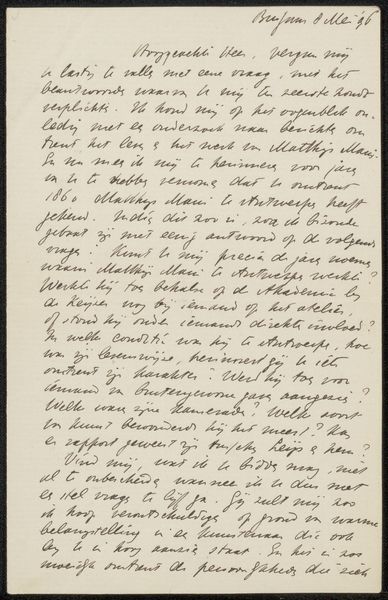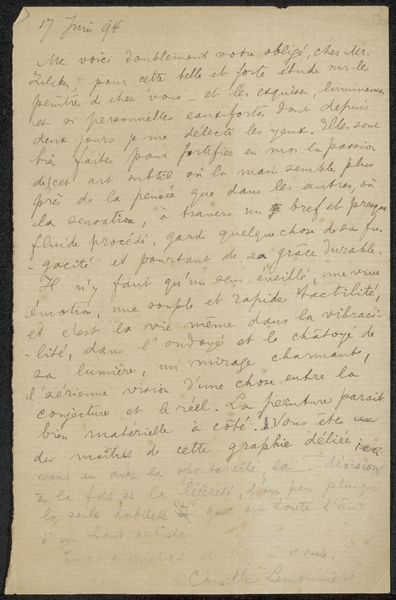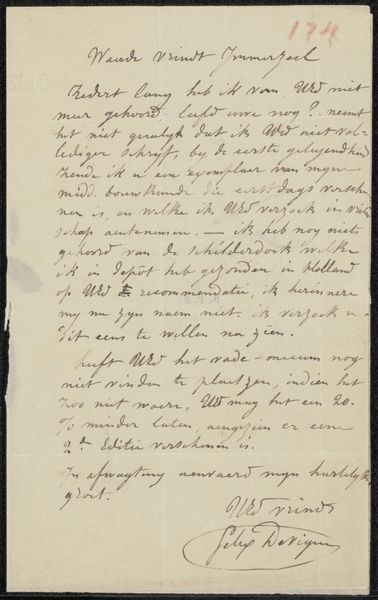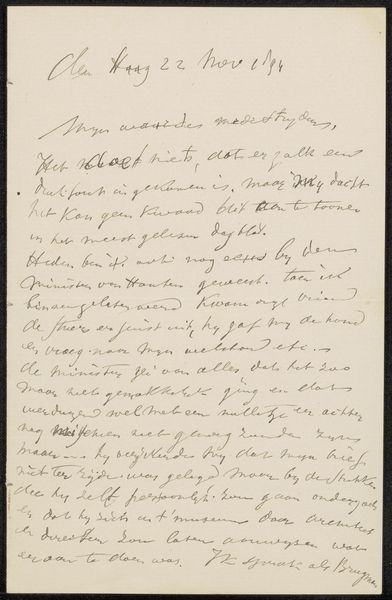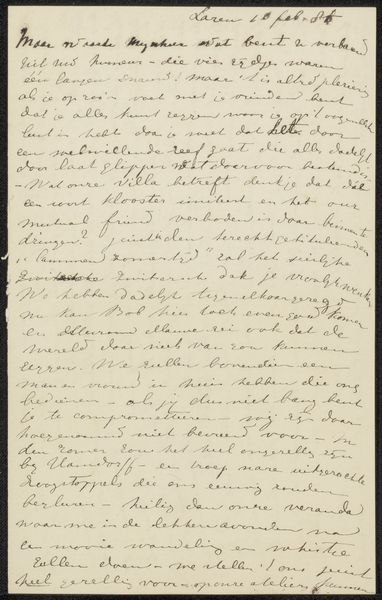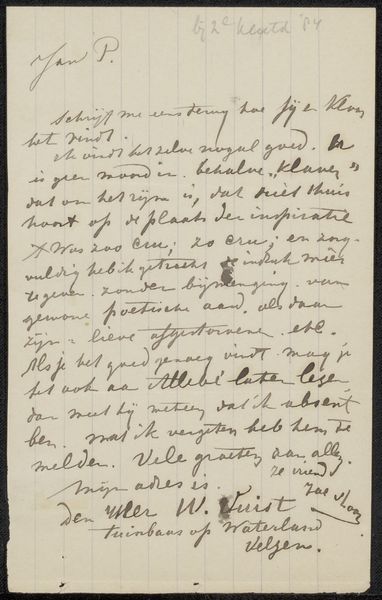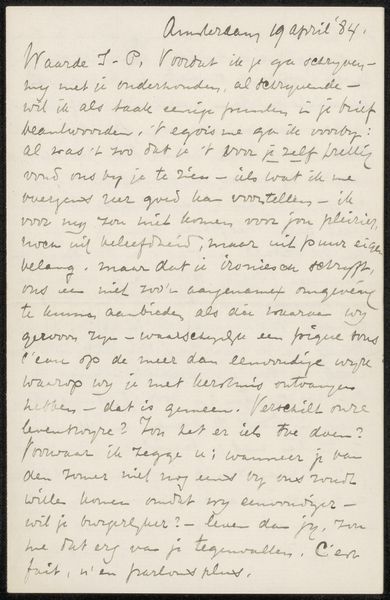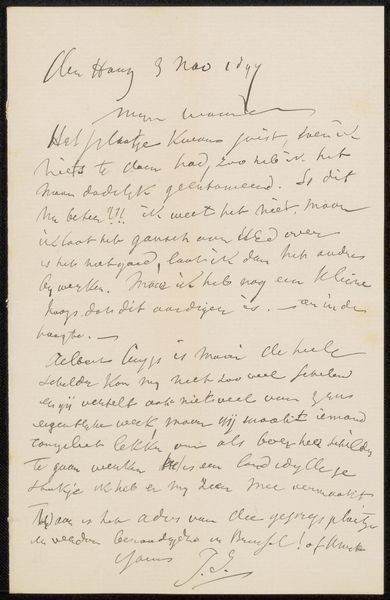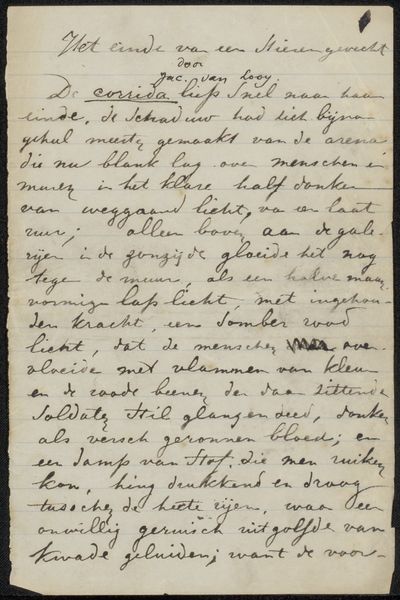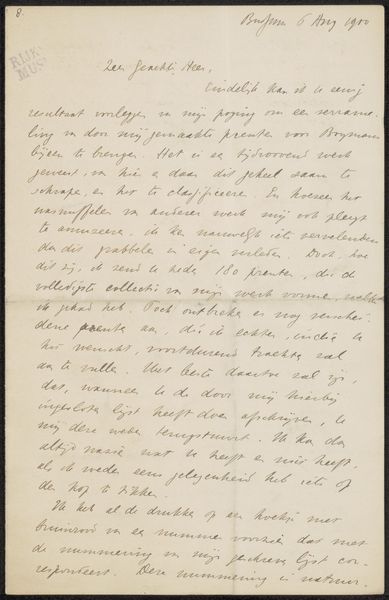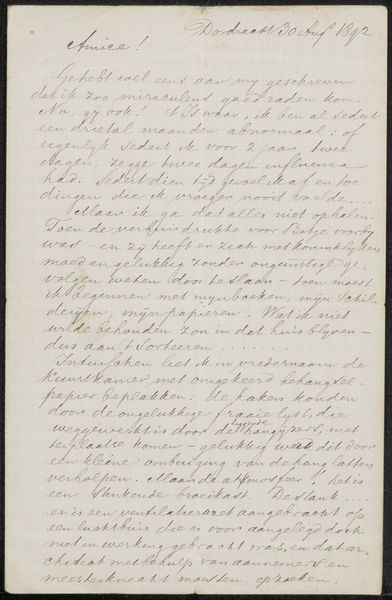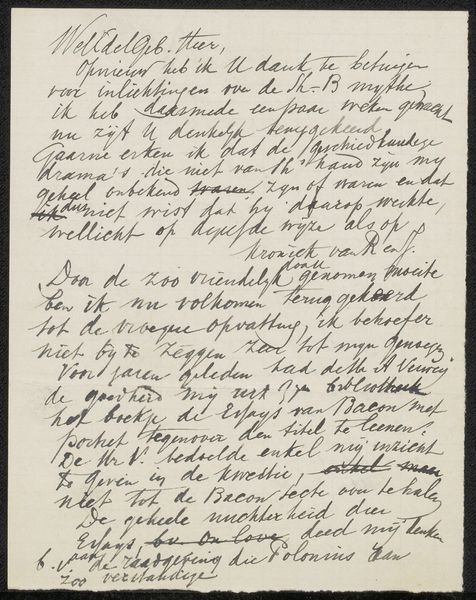
drawing, paper, ink
#
portrait
#
drawing
#
paper
#
ink
#
realism
Copyright: Rijks Museum: Open Domain
Curator: Let's consider this piece entitled "Brief aan Jan Veth." It’s noted as being possibly from 1886 and presented as a drawing. The materials appear to be ink on paper. What’s your immediate reaction? Editor: Stark, yet strangely intimate. The density of the handwritten script gives the entire page a unified, almost woven texture, which also, from another viewpoint, gives it a very cold expression because the letter looks completely unreadable to me. It's fascinating, like gazing at an impenetrable document filled with secrets. Curator: Right, and culturally, the letter speaks volumes about the social networks of artists and intellectuals. Jan Veth was a prominent critic and artist, suggesting that our letter writer—Frank van der Goes—placed considerable importance on their relationship, evidenced by the formalities like a date, place, and friendly closings. This type of correspondence functioned as vital currency within artistic circles. Editor: Exactly. I'm interested in the performative aspect of such communications. The very act of writing, choosing each word carefully, was about constructing an image. We are witnessing someone attempt to shape their legacy and current professional networks in their moment in time. It also speaks to social stratification, these kinds of exchanges are happening between specific actors in specific contexts. Curator: Considering van der Goes’s dedication to realism, this letter—seemingly unadorned—takes on the weight of his whole worldview. The candid handwriting reveals his interiority. Yet it does beg the question—to what extent does this reflect a true inner state or simply the conventions of epistolary art? Editor: Well, handwriting, of course, can symbolize unique features of a particular culture in time and across time. Think about those almost unreadable handwritten prescriptions we see sometimes and immediately consider illegible doctor handwritings a visual shorthand. If that still happens today, this might even more pertinent in this letter’s time and place. Is he concerned that someone might misinterpret what he says if he does not follow stylistic conventions? It's all layered within these unassuming materials. Curator: I find it interesting that even in what seems like a casual form of correspondence, he seems concerned with creating and carefully expressing a kind of authentic image. Editor: And that, to me, is the ongoing power of this letter, beyond its explicit content; its ability to whisper stories of both vulnerability and a conscious, considered artistry, both personal and cultural.
Comments
No comments
Be the first to comment and join the conversation on the ultimate creative platform.
